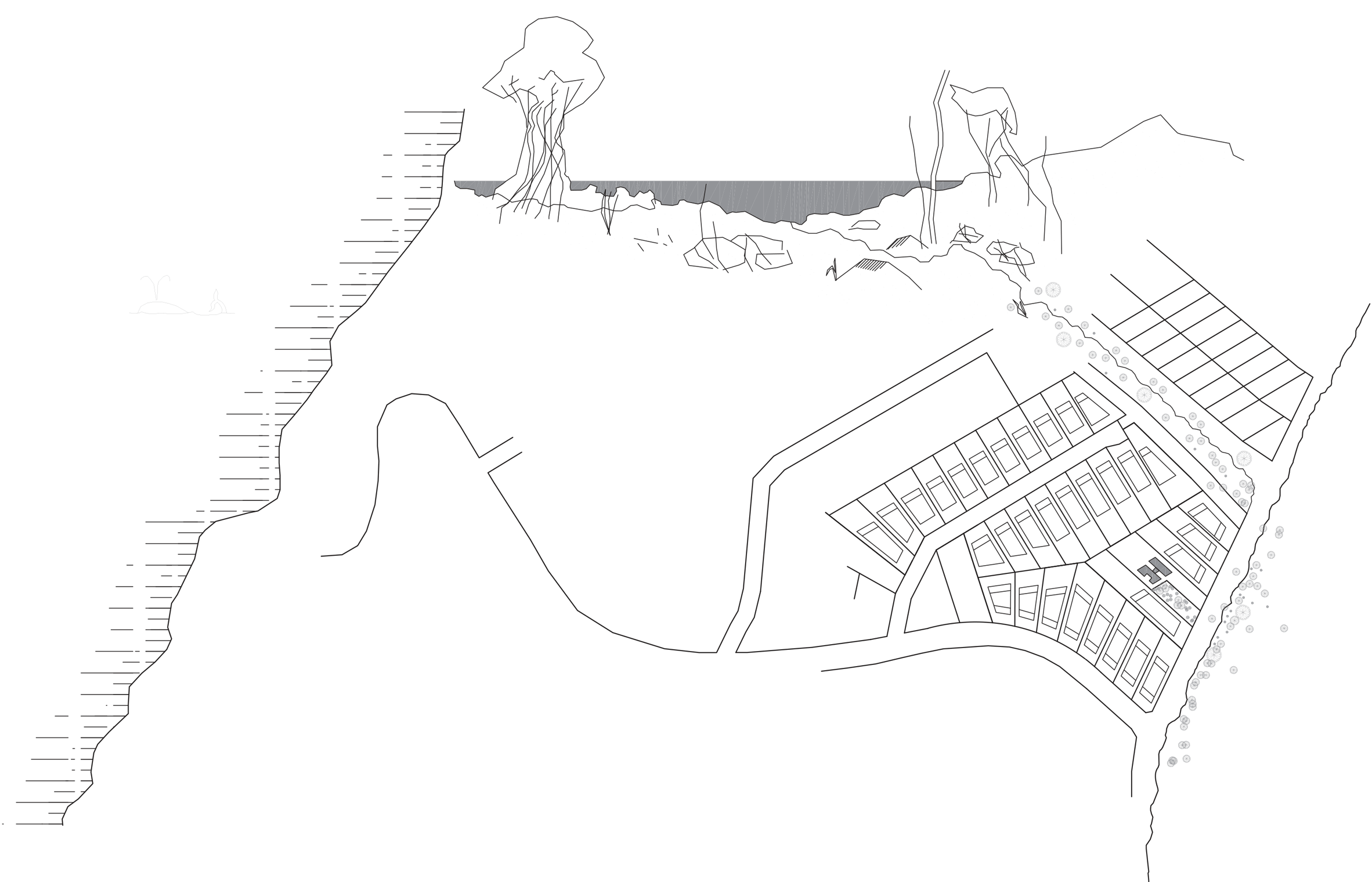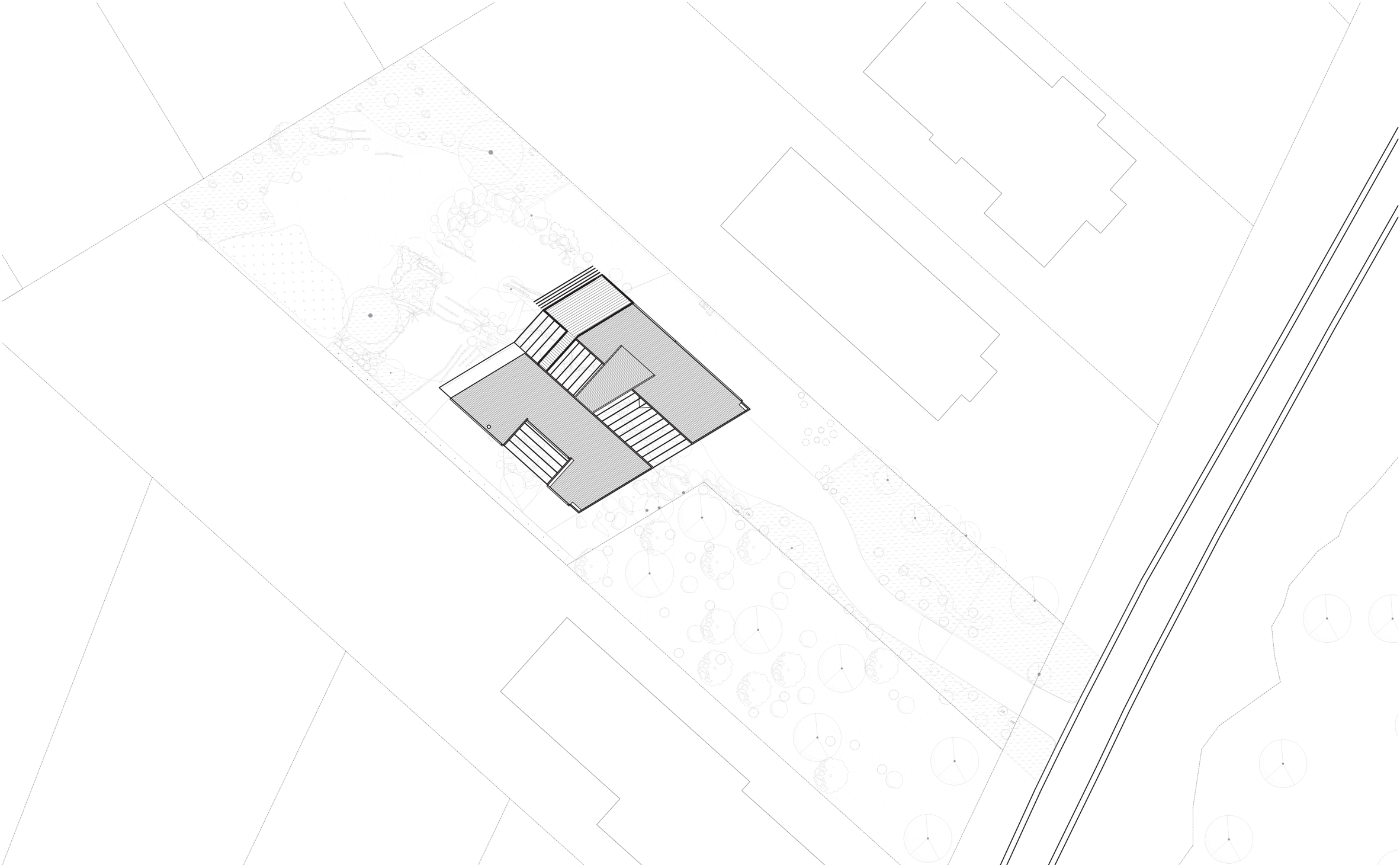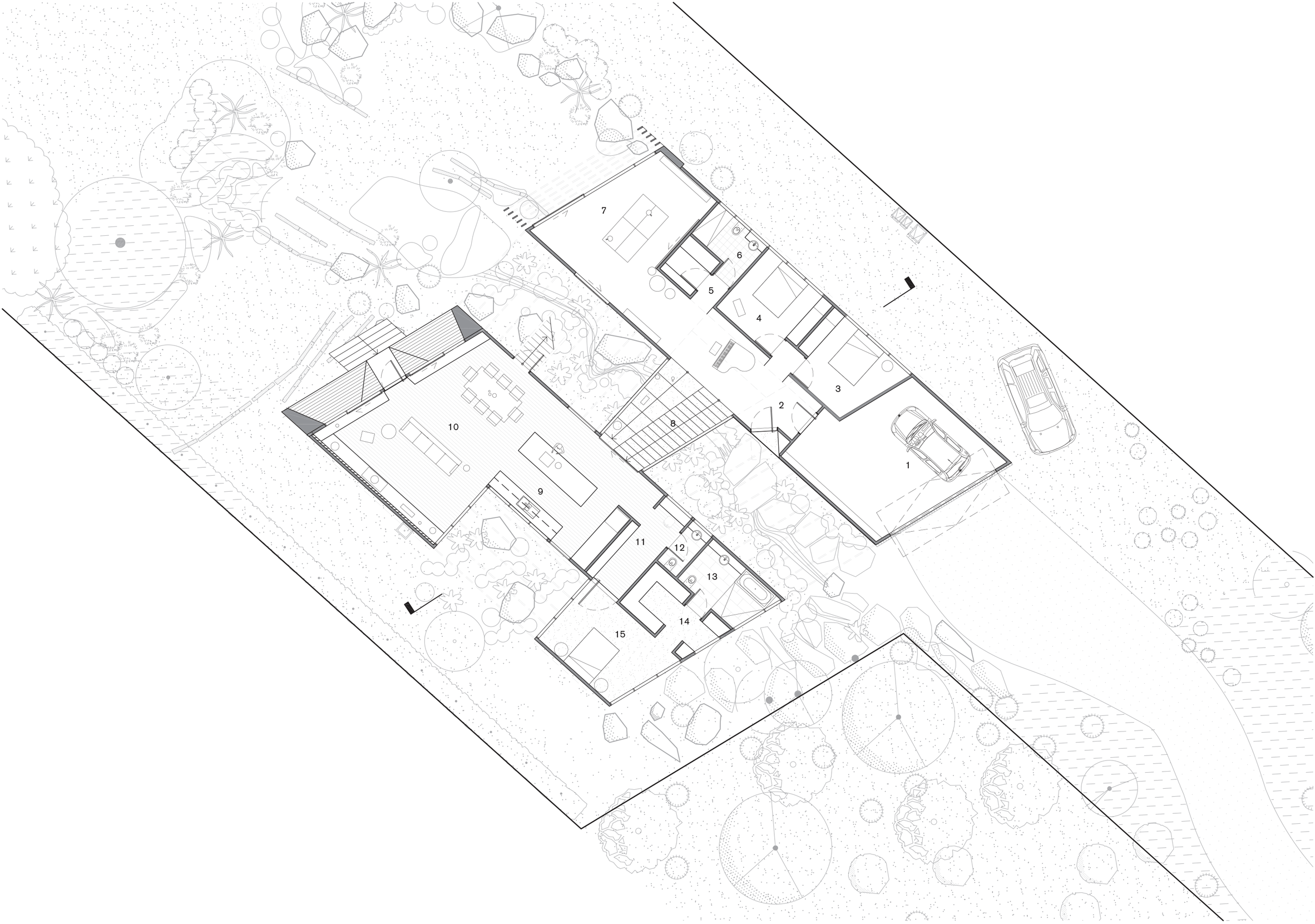Split House by BKK Architects is made up of two angular wooden structures
Angular volumes clad in timber and metal step down the side of a sloping site to form this house near Melbourne with ocean views (+ slideshow).
The Split House was designed by local studio BKK Architects for a site in a recent housing development within the Mount Martha area, around 60 kilometres south of the Australian city.
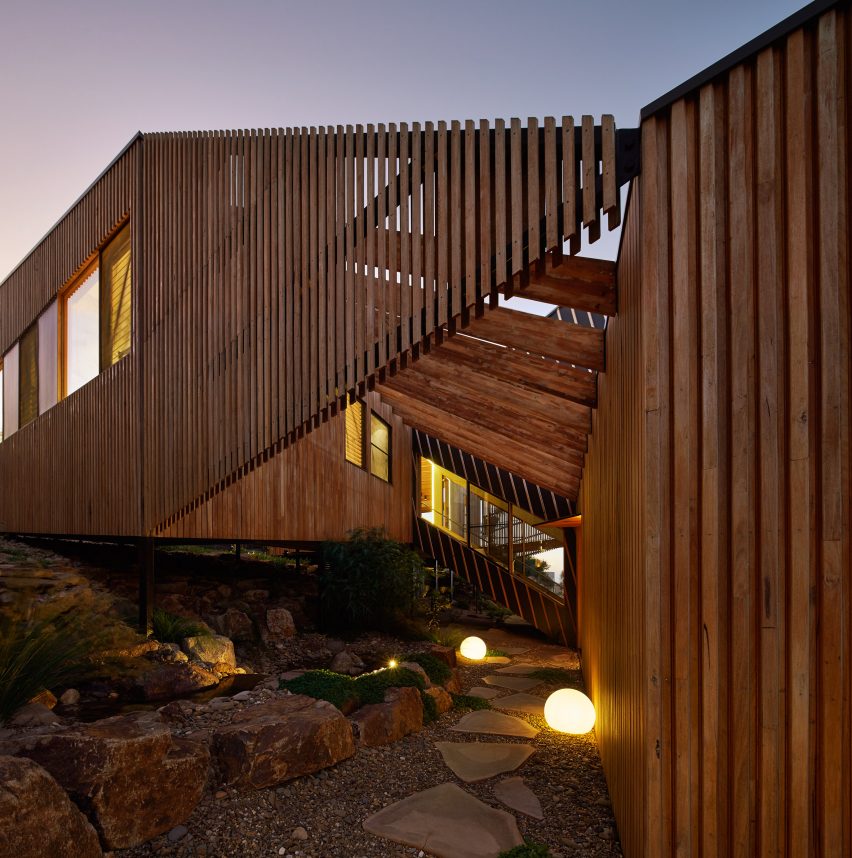
The plot is positioned on a hillside looking towards Port Philip Bay, with the woodland of the Mount Martha Nature Conservation Reserve located on the other side of the street.
This led BKK Architects to a design that makes the most of the available views while also ensuring privacy from neighbouring properties.

"Within this context the Split House provides a range of spatial relationships to its site and the broader territory that carefully balances the owners' desire for privacy and engagement with their surrounds," said the architects.
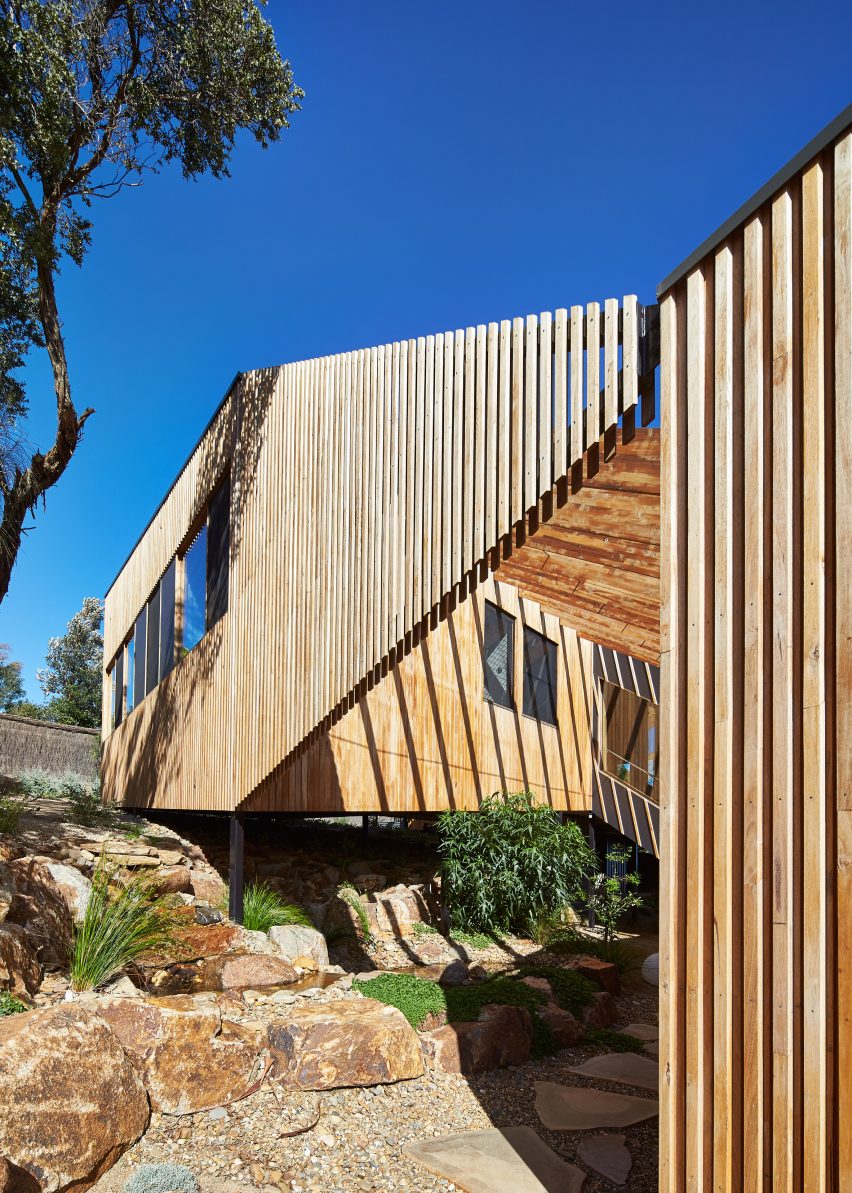
The building is divided into two timber-clad volumes, connected by a bridging stairway covered with zinc panels. A gap beneath the stairs provides a view through from one side of the building to the other.
Beneath the stairs, a path leads to an entrance that opens into a reception area accommodating a piano. The walls of this space are clad in vertical wooden boards that extend over the underside of a sloping ceiling.
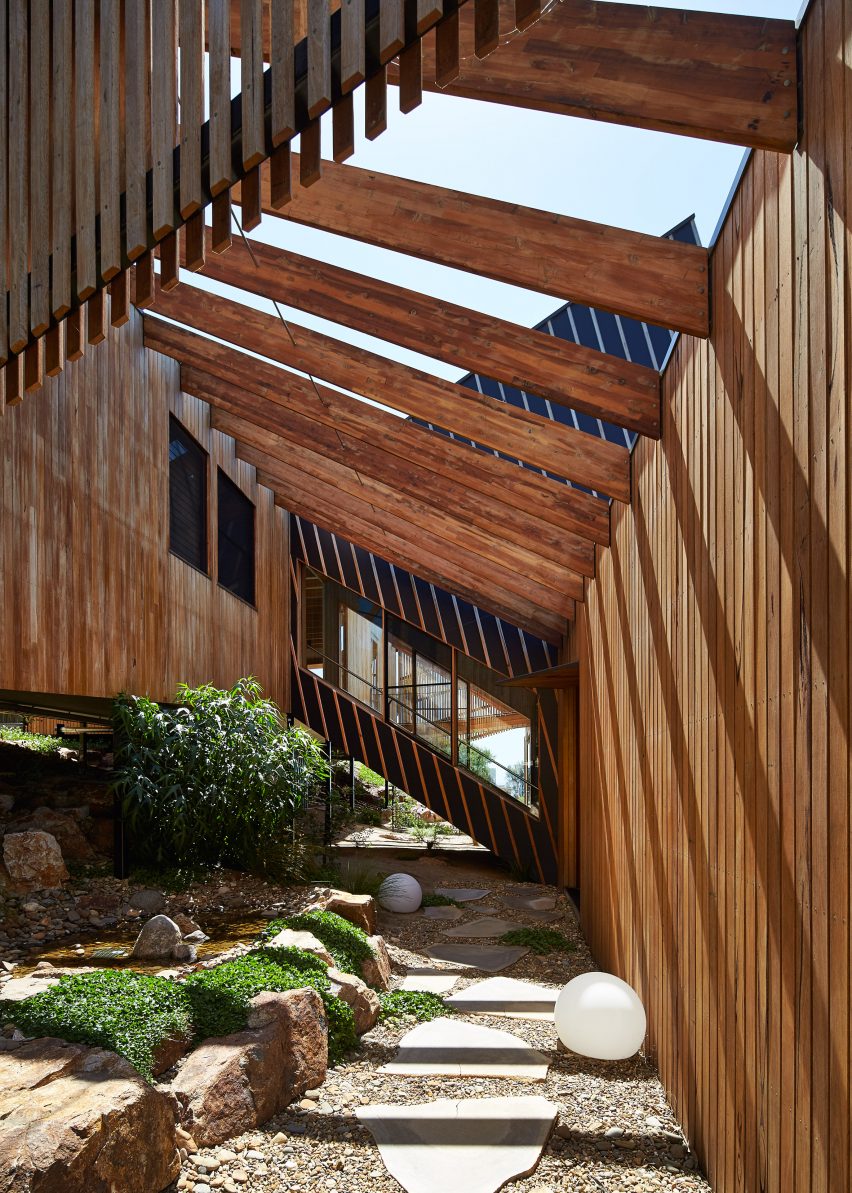
The staircase itself incorporates carpeted seating from which the owners and their guests can enjoy performances or look out through windows on either side.
Sunlight projects down into this space through a window inserted in the projecting roof structure.
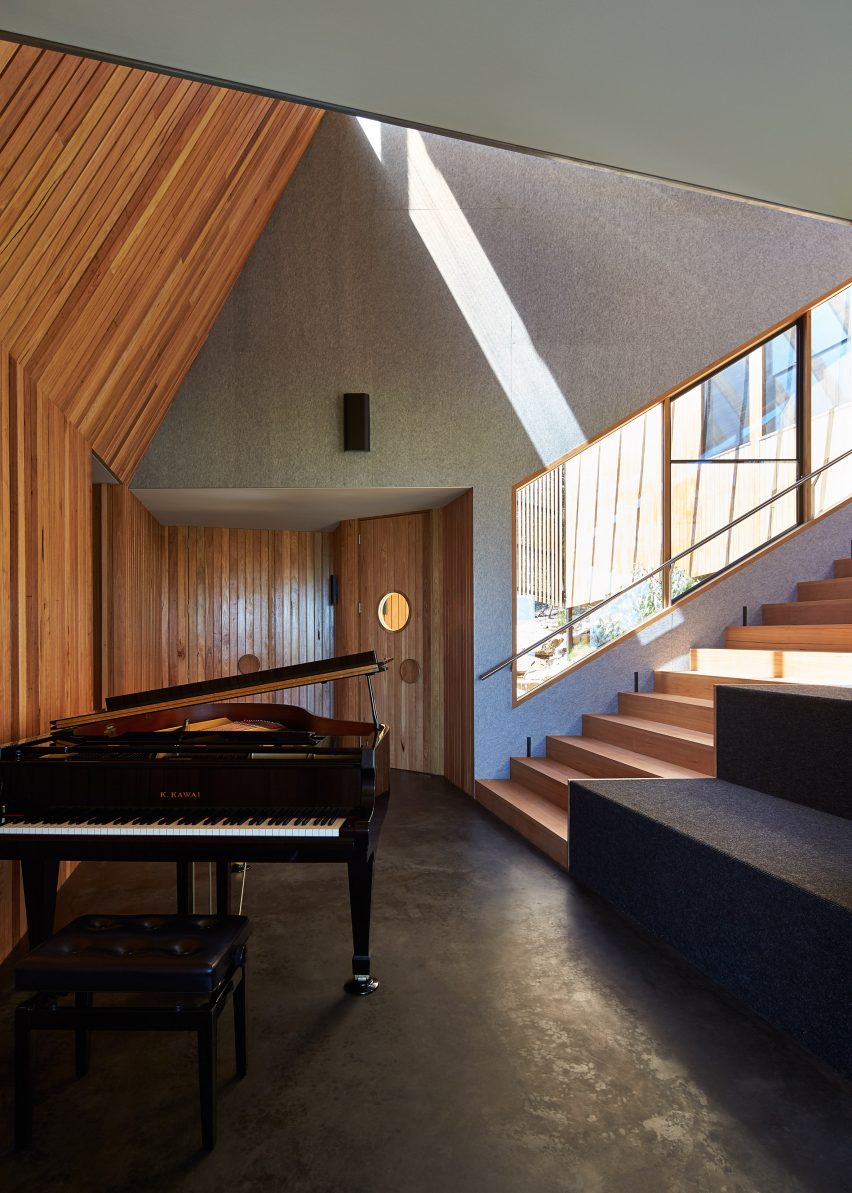
The lower storey contains bedrooms, a bathroom, a laundry area and a games room flanked by sliding glass doors that open onto the lawn.
At the top of the stairs is an open-plan kitchen, dining area and lounge, with a master bedroom suite accommodated at one end.
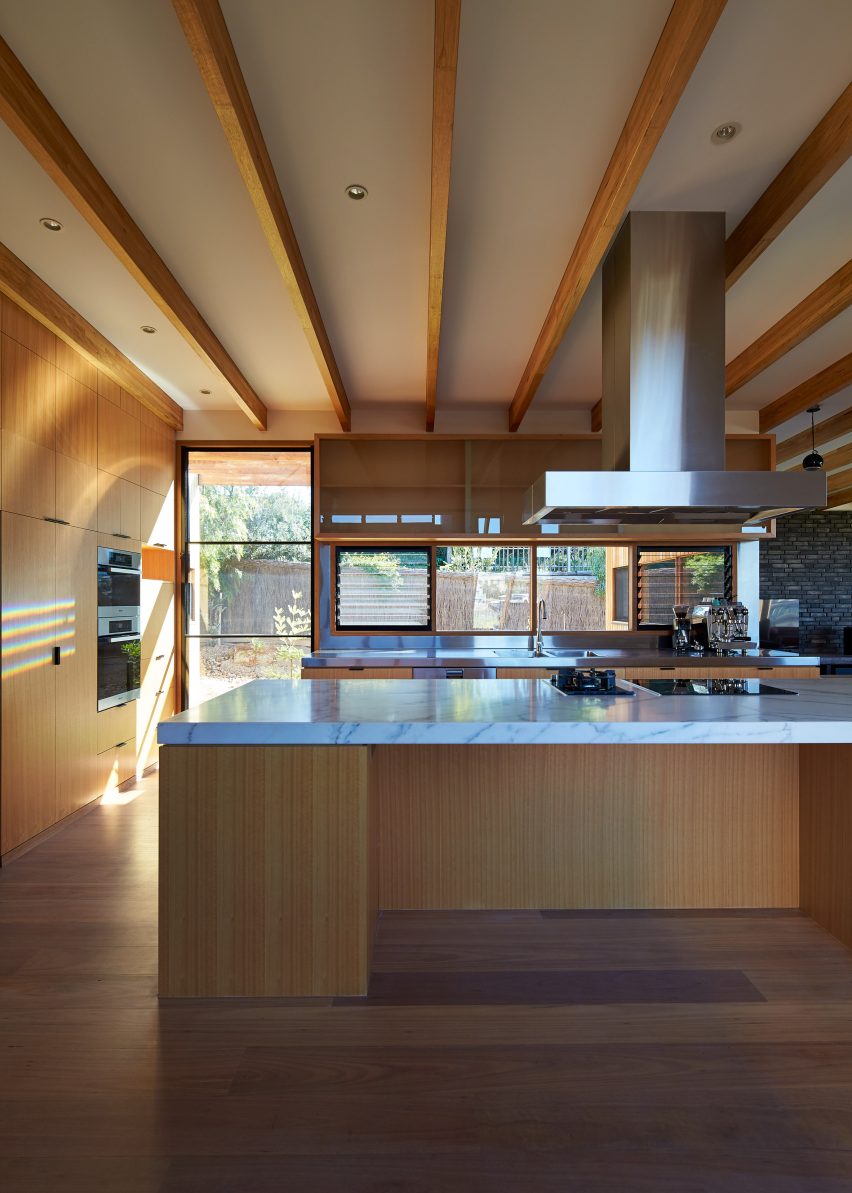
The opposite end of the space incorporates windows and a door that leads out to a rock garden connected to the lawn below by a step of rough stone steps.
The windows are set back from the structure's facade to protect them from direct sunlight. The edges of the opening are slanted inwards, forming a funnel-like form that accentuates the transition from inside to outside.
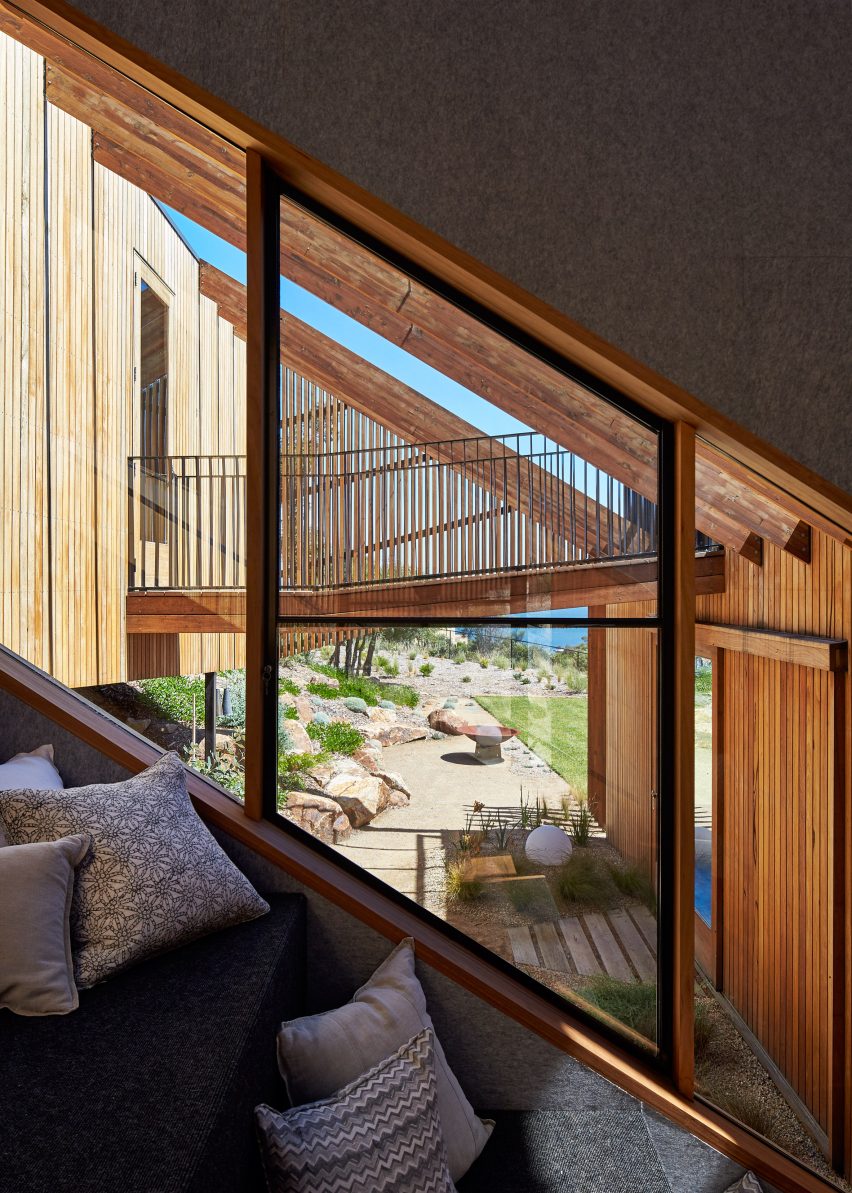
Another door from the lounge opens onto a bridge that extends across the gap between the two volumes. It leads to a terrace on the roof of the lower storey that looks out towards the bay.
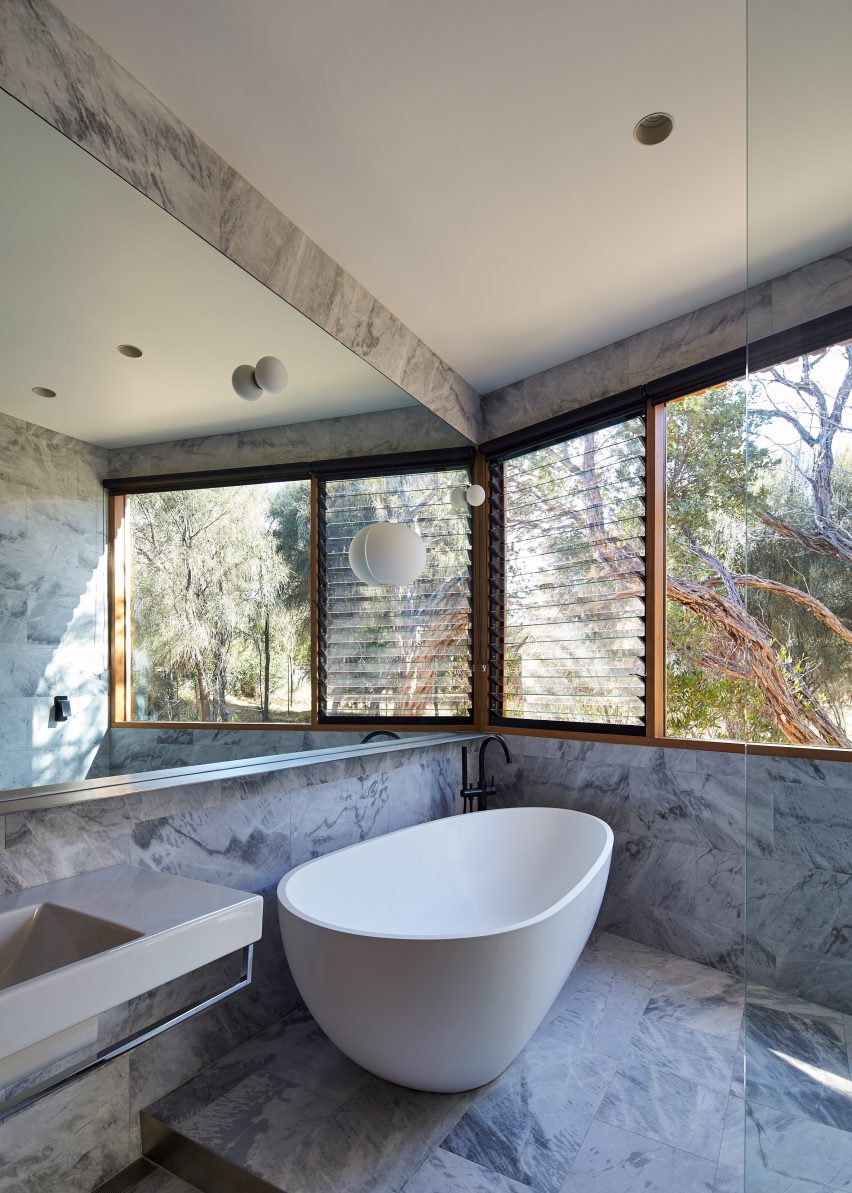
Landscaped gardens woven around the building are shaded by screens and pergolas where required to create "a sequence of distinct spaces with varying qualities of light and shadow".
"At its inception, the landscape and spaces in between the house were conceived as of equal importance as the building itself," added the architects.
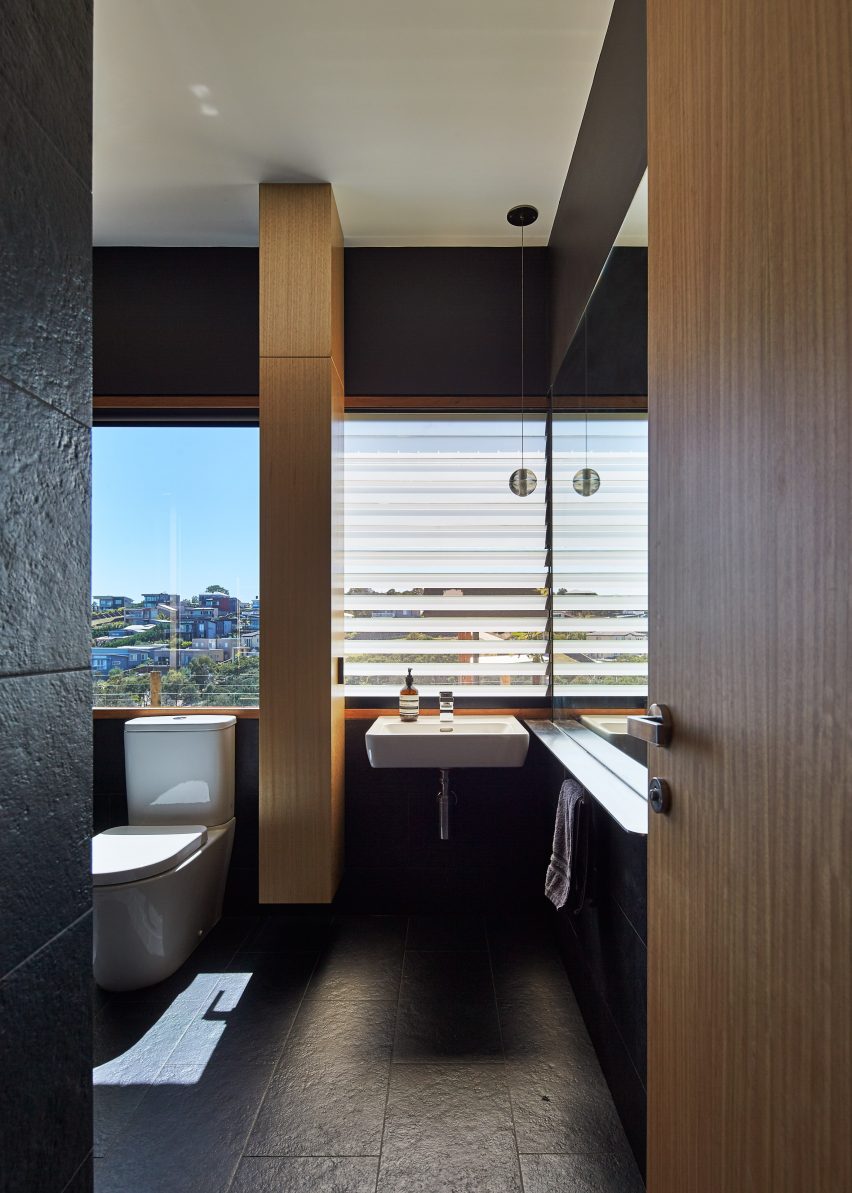
, which has previously completed another house near Melbourne with a gabled form inspired by a dolls' house and a holiday retreat arranged around a narrow pool.
Photography is by Peter Bennetts.
